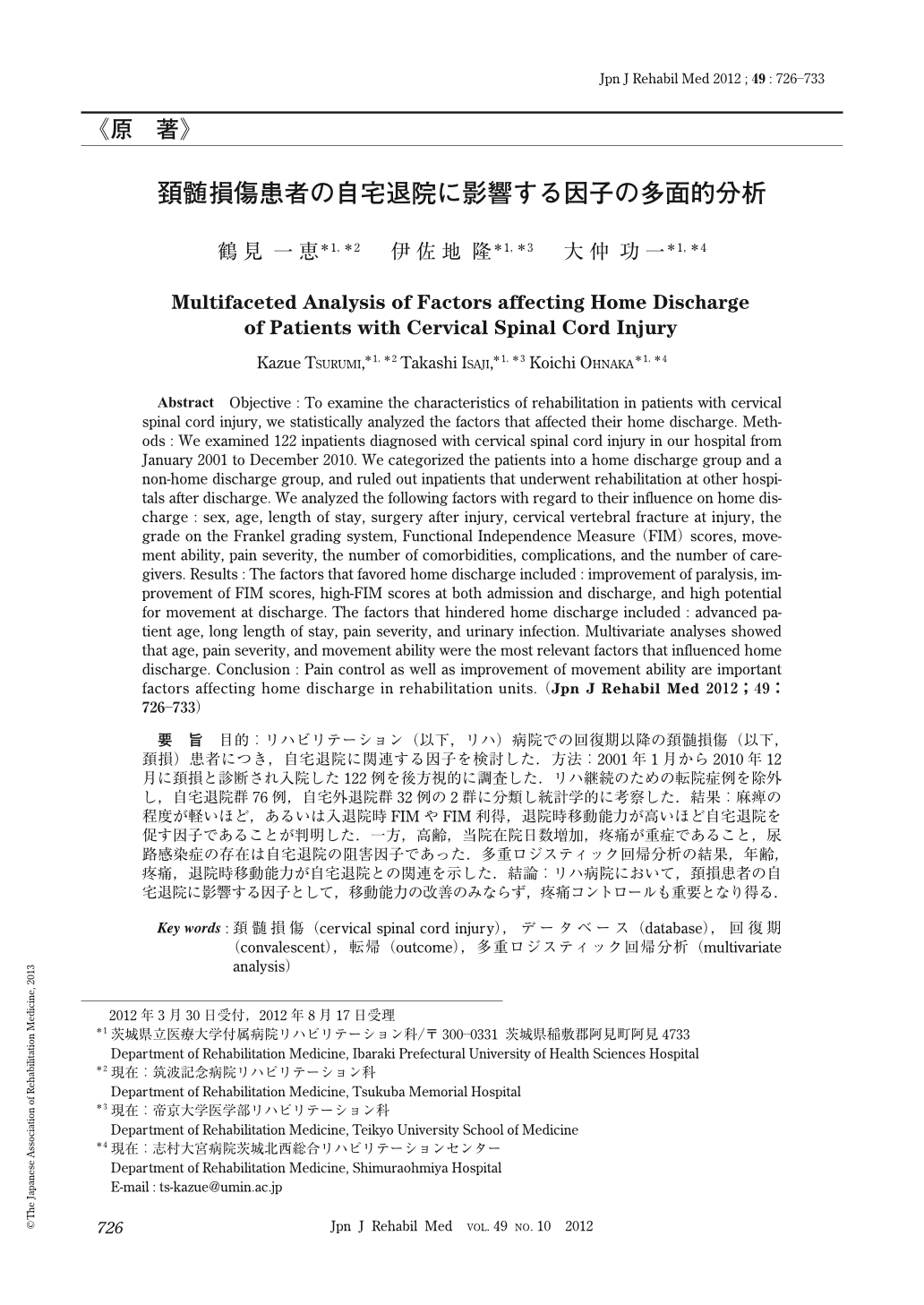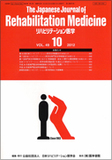Japanese
English
- 販売していません
- Abstract 文献概要
- 1ページ目 Look Inside
- 参考文献 Reference
要旨 目的:リハビリテーション(以下,リハ)病院での回復期以降の頚髄損傷(以下,頚損)患者につき,自宅退院に関連する因子を検討した.方法:2001年1月から2010年12月に頚損と診断され入院した122例を後方視的に調査した.リハ継続のための転院症例を除外し,自宅退院群76例,自宅外退院群32例の2群に分類し統計学的に考察した.結果:麻痺の程度が軽いほど,あるいは入退院時FIMやFIM利得,退院時移動能力が高いほど自宅退院を促す因子であることが判明した.一方,高齢,当院在院日数増加,疼痛が重症であること,尿路感染症の存在は自宅退院の阻害因子であった.多重ロジスティック回帰分析の結果,年齢,疼痛,退院時移動能力が自宅退院との関連を示した.結論:リハ病院において,頚損患者の自宅退院に影響する因子として,移動能力の改善のみならず,疼痛コントロールも重要となり得る.
Abstract Objective : To examine the characteristics of rehabilitation in patients with cervical spinal cord injury, we statistically analyzed the factors that affected their home discharge. Methods : We examined 122 inpatients diagnosed with cervical spinal cord injury in our hospital from January 2001 to December 2010. We categorized the patients into a home discharge group and a non-home discharge group, and ruled out inpatients that underwent rehabilitation at other hospitals after discharge. We analyzed the following factors with regard to their influence on home discharge : sex, age, length of stay, surgery after injury, cervical vertebral fracture at injury, the grade on the Frankel grading system, Functional Independence Measure (FIM) scores, movement ability, pain severity, the number of comorbidities, complications, and the number of caregivers. Results : The factors that favored home discharge included : improvement of paralysis, improvement of FIM scores, high-FIM scores at both admission and discharge, and high potential for movement at discharge. The factors that hindered home discharge included : advanced patient age, long length of stay, pain severity, and urinary infection. Multivariate analyses showed that age, pain severity, and movement ability were the most relevant factors that influenced home discharge. Conclusion : Pain control as well as improvement of movement ability are important factors affecting home discharge in rehabilitation units.

Copyright © 2012, The Japanese Association of Rehabilitation Medicine. All rights reserved.


